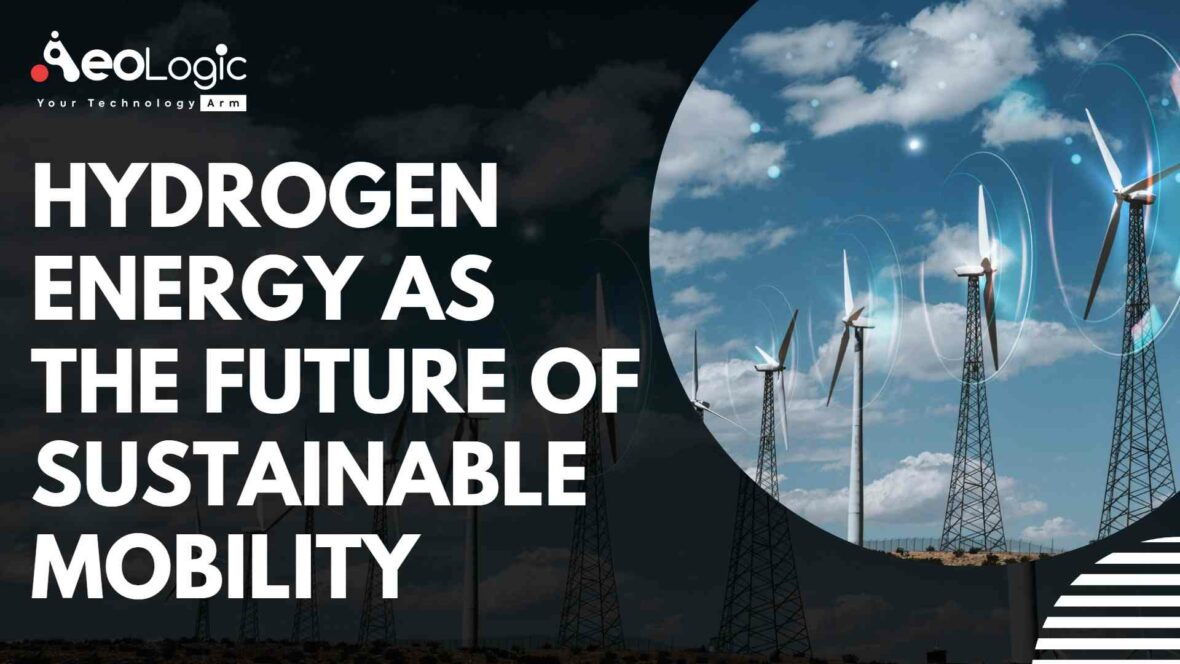Green hydrogen is made from renewable energy sources – is observed more and more as the holy grail in the conversion to a carbon-neutral economy. The international market for hydrogen production is projected to reach USD 201 billion in 2025, compared to USD 130 billion in 2020. This increase is being driven by its potential implementation into the transition to a carbon neutral economy. Sustainable mobility, optimizing renewable energy production, and decarbonizing industrial processes are the applications for hydrogen that are multiplying. Hence, we will be discussing the role of hydrogen energy future in sustainable mobility.
Also read: How Does Technology Help Sustainability
While the industrial application of hydrogens such as ammonia production and the refining of petroleum products are still accounting for the vast majority of its consumption nowadays, a number of other applications are developing.
An example of such an application is Mobility. Fuel cells (FCVs) powering vehicles emit only water vapor, which significantly reduces their carbon footprint. Furthermore, hydrogen energy future in sustainable mobility can also help with decarbonizing electricity production.
Hydrogen Contributing to the Move to a Net-Zero Economy
Hydrogen energy future in sustainable mobility has a major role to play in meeting the environmental challenges created by global warming. It elaborates why most of the countries that signed the Paris Agreement are using hydrogen-friendly policies. In order to help them meet the target of limiting the growth in the average global temperature to 1.5°C compared to pre-industrial levels.
In some 30 countries in 2021 delivered a roadmap for 2030 that included private and public investments totaling more than USD 300 billion in 224 hydrogen-related industrial projects. Europe is announcing 126 projects, far ahead of Asia (46), Oceania (24), and North America (19). Governments alone are planning for investing USD 70 billion in these projects globally by 2030.
The Challenges of Hydrogen Deployment
However, hydrogen is still facing a number of challenges:
- Production costs. The cost of green hydrogen (produced from renewable energy) fell by 40% between 2015 and 2020, according to BloombergNEF. If these predictions prove accurate, it will be competitive with ‘grey’ hydrogen produced from natural gas.
- Investment. The progress of hydrogen-based transport will demand the necessary infrastructure, such as the availability and accessibility of fuelling stations on roads. However, which so far remains limited. The same goes for storage. Nonetheless, several projects are emerging in recent years for addressing this issue.
- Lastly, the hydrogen industry must review its production methods. Whether by the electrolysis of water, the gasification of coal, or the steam reforming of natural gas, 95% of all hydrogen is produced with the use of fossil fuels. It has an unfavorable carbon footprint.
Although the situation is better for ‘blue’ hydrogen, where carbon dioxide emissions are detected for reuse or storage. As they are similar to grey hydrogen. Its footprint is still preventing it from playing any real role in the energy transition. A process that helps in delivering so-called ‘green’ hydrogen.
Investing in Sustainable Hydrogen
Investing in a hydrogen energy future in sustainable mobility means supporting the rise of sustainable energy. Furthermore, the European Union is planning to invest EUR 500 billion over 10 years in green hydrogen. And is aiming to reach an electrolysis capacity of 40 gigawatts (GW) by 2030. As compared to less than 0.1GW to date.
In the US, the Hydrogen Program Plan has announced in November 2020 also involves considerable efforts to decarbonise hydrogen.
Finally, China has also declared a similar megaproject in Inner Mongolia in 2021, with the start-up planned for mid-2023.
According to BloombergNEF, green hydrogen could significantly reduced at a reasonable cost global greenhouse gas emissions. That too, by one-third in the coming decades.
The future of hydrogen is hence, sustainable. However, it requires funding for projects to increase the uses of hydrogen, equally in terms of infrastructure and innovation.
Also read: Role of Artificial Intelligence in Sustainable Cities
Conclusion
In the coming years ahead, hydrogen energy future in sustainable mobility will have advantages. This could certainly facilitate the industry to expand and take its rightful place. That too is within a responsible energy mix that seeks for meeting the increasing environmental challenges.
Contact us for further information!







